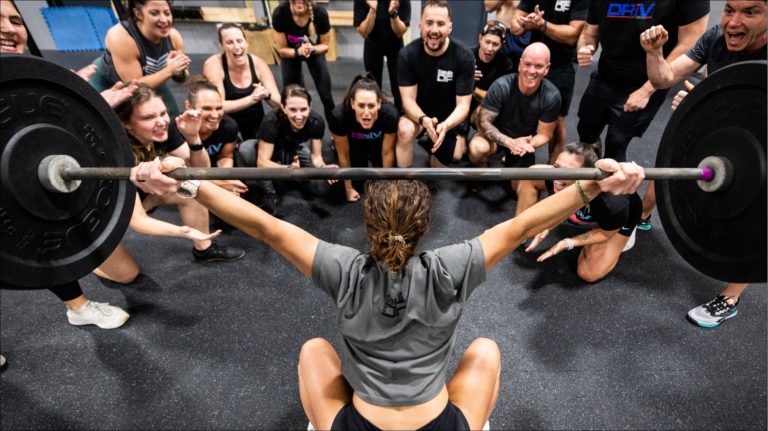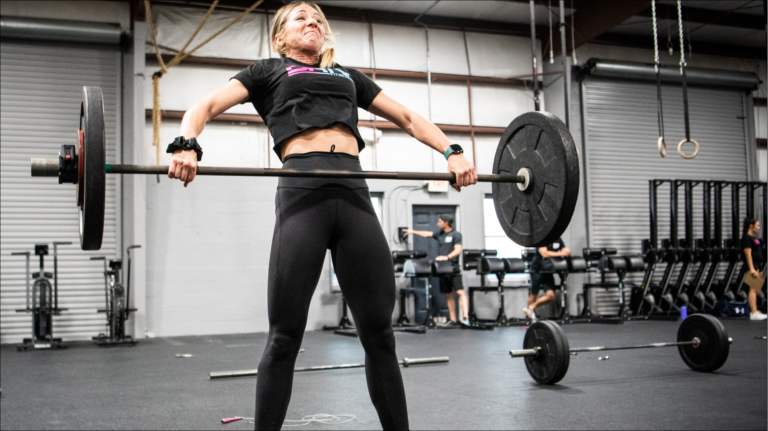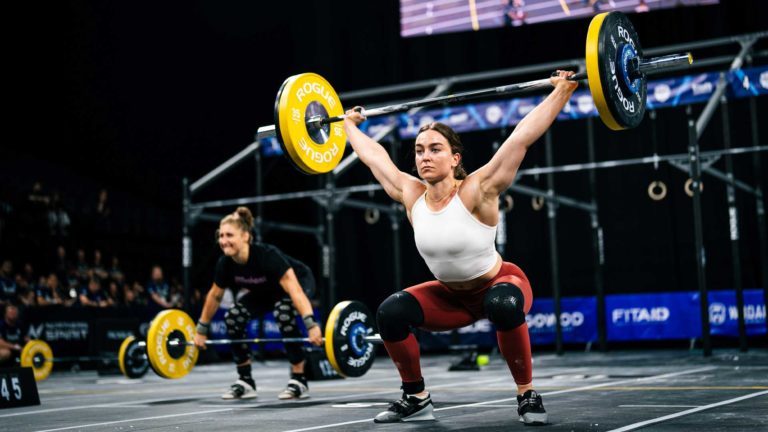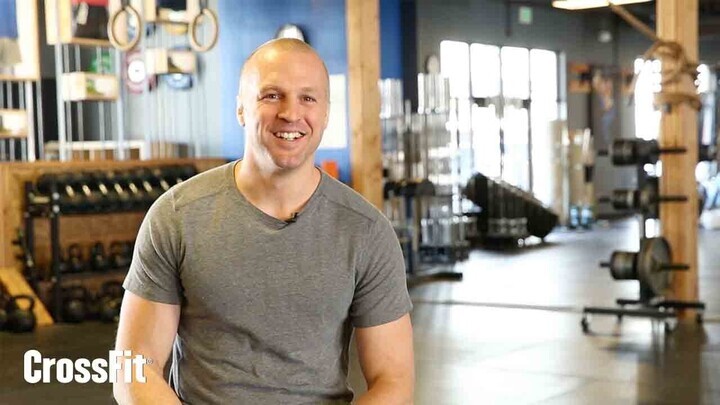Question: My athletes keep missing the bar forward in the snatch. What should I do?
June 4, 2025
Question: My athletes keep missing the bar forward in the snatch. What should I do?
The snatch is a complex lift that can lead to many frustrating moments regardless of experience and capacity. It’s even more frustrating when athletes KNOW they can lift the weight, but they just keep failing!

The snatch is typically missed because athletes lose the bar in front of them. Assuming they have the strength to complete the lift, this can happen for a variety of reasons. Of note, the heavier they get to a true 1-rep max, the smaller their margin of error. Not being precise at a light load may not lead to a missed lift; however, that same error will not allow athletes to be successful at heavier loads. So make sure your athletes are dialed in and focused at even very light loads.
When trying to pinpoint the errors, start by focusing on the four major phases of the movement:
There is obviously a completion phase when the athlete stands up with the weight still overhead, but assuming the other phases are successful and they have a sound overhead squat, this will likely not be an issue.
The following encompasses the primary (not all) faults we see at each phase and the corrective strategies to employ.
Common Fault: Hips are too high in the set-up position.
The best execution for the snatch requires hip positioning that is lower than the traditional deadlift. When hips are too high, the athlete may shift forward excessively or as they initiate the lift. This set-up error will also lead to more difficulty through the remaining phases of the lift, such as the bar drifting away from the body as they initiate the lift and errant bar path issues on the second pull due to excessive horizontal hip movement.
Correction:
Reinforce the correct set-up position with light loads and even a PVC pipe by cueing the athlete to bend their legs more or lower their hips. You may also need to cue them to pull their shoulders to their back pockets.
The first pull is a positioning pull that sets the athlete up for success for the remainder of the lift, and there are many ways this portion of the lift can be flawed, which may cause the lift to be missed forward. The following are a few of the most common faults that we see.
Common Fault: Shifting forward onto the toes excessively.
We want the entire foot to be rooted to the ground; however, at the initiation of the lift, athletes may shift excessively toward the foot and cause the bar to drift forward of the frontal plane. At times, this can also be associated with the hips raising at a faster rate than the bar.
Correction:
Cue the athlete to drive through the heels (potential over-correction) or cue athletes to keep their shoulders up when they lift (if hips are raising too quickly).
Common Fault: The bar separates from the body.
The bar should be kept tight to the body. If the bar drifts away from the body, it may lead to missing lifts forward. This deviation can happen when in the set-up position, immediately when initiating the lift, or after clearing the knees with the barbell. This may happen for a few reasons, but a common fault is that the athlete’s shoulders yield to the load.
Correction:
Cue the athlete to keep the bar tight to their body or to pull their shoulders to their back pockets.
When using a lightweight or a PVC pipe, you can attempt to tug the bar forward while cueing the athletes to keep their bar against their legs.
Common Fault: Initiating the second pull too early.
The first pull is intended to bring the bar to a position high on the thighs where the athlete can start to initiate an effective extension (jump) of the lower body to elevate the barbell. There is a tendency for that to initiate the extension (jump) with the bar at or slightly above the knees. This may not only cause the bar to drift forward but also blunt overall power.
Correction:
Cue the athlete to keep the shoulders over the bar until the mid-thigh or to make sure the bar touches their mid-thigh/pockets.
Drill For the First Pull
Athletes can perform drills that isolate the first pull to assist with developing this area of the movement if your cues are not working. One of my favorite drills is the halting snatch deadlift. This involves lifting the bar (typically at a slow cadence) and pausing at the correct mid-thigh position for a few seconds before returning the bar to the floor. If building technique and capacity with this movement, you may opt for a complex that combines this drill with the full movement, such as two halting snatch deadlifts and one snatch.

The second pull contains the rapid hip and leg extension of the lower body, after the bar has reached approximately the mid-thigh position, to elevate the bar vertically. Below are a few of the faults that may occur during this phase to cause an athlete to miss the bar forward.
Common Fault: Hips are banging into the bar excessively.
At times, athletes will have excessive horizontal movement of the hips in a well-intended effort to extend the lower body correctly. However, this can cause the bar to swing away from the body excessively, and/or this could prevent the legs from extending fully.
Correction:
Cue athletes to jump vertically or focus on squeezing their quads and glutes as they finish the second pull.
Common Fault: Jumping forward.
If the athlete shifts forward onto their toes excessively prior to extending the hips and legs, they may jump forward, which will cause the bar to move forward as well. A poor first pull may also cause this fault.
Correction:
Cue the athlete to extend upward or to make sure their shoulders move behind the bar when they extend the hips. You can also have them reduce the load and line their toes up with a seam in the floor, then cue them not to move forward of the line.
Common Fault: Early Arm Pull
Pulling with the arms before the lower body has extended not only blunts the maximum power that can be generated but may also create separation between the bar and the body, leading to missing the lift forward of the body.
Correction:
Cue the athlete to keep their arms long until they have jumped aggressively or perform two snatch pulls followed by one snatch.
Drills for the Second Pull
A variety of drills can be done for the second pull to aid with teaching proper extension of the lower body and proper bar path. My personal go-tos are hang power snatches, muscle snatches, or performing a complex of two snatch high pulls followed by one snatch. These drills may also be helpful for issues in the third pull.

The third pull occurs after extending the lower body and is an aggressive pull under the barbell into the overhead squat position. The speed, timing, and change of direction during this phase of the movement are difficult yet vital for lifting maximum loads.
Common Fault: Slow under the bar.
As the load increases, the height at which the athlete can elevate the bar is reduced. This means the athlete is required to receive the bar at a lower squat position than what is required at lighter loads, increasing the demand on an aggressive and quick pull-under.
Correction:
The drills mentioned below will likely be your best long-term corrective strategies. However, you can attempt to cue athletes to pull under quicker. Personally, in this scenario, I’ve found it best to chat with them between sets and let them know they need to commit to getting under the bar much faster now, because they cannot elevate the bar as high.
Common Fault: Lazy lockout.
The final part of receiving the bar is actually an aggressive push into it with the upper body to fully lock it out overhead. If this overhead position is passive, the shoulders and arms may yield to the load, causing a missed lift. In this instance, the missed lift is often forward, but could also be missed behind the athlete.
Correction:
In this instance, cue the athlete to aggressively punch up into the bar when finishing the lift.
Drills for the Third Pull
There are several drills athletes can practice to focus on the third pull of the lift. Two of the most common drills are snatch balances and tall snatches. These drills can make for great standalone technique sessions or drills to include prior to performing your workouts.
The snatch is a movement that takes years of practice to master and will always require continuous refinements. Luckily, refinements can be made with very light loads and even a PVC pipe. A starting point could be to incorporate skill work in this fashion as part of your warm-up for any workout, one or two times per week. Increasing the frequency at which your athletes practice will likely be the most important step in improving this lift.
Have a question for a coach? Please submit that here.
 Eric O’Connor is a Content Developer and Seminar Staff Flowmaster for CrossFit’s Education Department and the co-creator of the former CrossFit Competitor’s Course. He has led over 400 seminars and has more than a decade of experience coaching at a CrossFit affiliate. He is a Certified CrossFit Coach (CF-L4), a former Division 1 collegiate wrestler, and a former CrossFit Games athlete.
Eric O’Connor is a Content Developer and Seminar Staff Flowmaster for CrossFit’s Education Department and the co-creator of the former CrossFit Competitor’s Course. He has led over 400 seminars and has more than a decade of experience coaching at a CrossFit affiliate. He is a Certified CrossFit Coach (CF-L4), a former Division 1 collegiate wrestler, and a former CrossFit Games athlete.